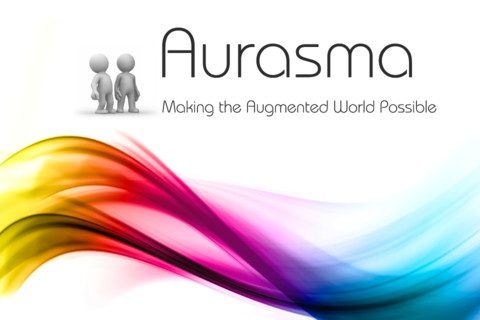Aurasma is a free augmented reality app that runs on iOS (iPhone, iPod Touch, and iPad), and Android. Using your phone’s camera and other sensors, the app projects digital scenes onto the real world through your device’s viewfinder. Aurasma is definitely a neat piece of demo technology but the question that haunts augmented reality remains: what is it good for?
The best way to experience Aurasma is to try it yourself. You can find it in Apple’s App Store here, or Google’s Play store here for Android devices. Using the app you can snap a photo of your subject (usually something flat like a book or photo) then place a digital photo, video, or even 3D object on top of it. After a brief period of processing, you’ll be able to point your device at the subject and Aurasma will place your ‘Aura’ (as they call it) over top of the object. With a little suspension of disbelief, it actually looks pretty good — as long as you set up the Aura correctly, the app does a good job of tracking it and placing the augmented info on top of it.
If you don’t have a mobile device compatible with Aurasma, see it demoed at TED here last month:
The idea and promise of virtual reality is pretty awesome — supplementing reality with useful information from the digital world. The problem is that I’ve yet to see any examples of ‘useful information’. The most compelling uses for this sort of augmented reality so far is as a crutch for print publications or novelty advertisements. The TED video above uses the example of the newspaper which “becomes out of date as soon as it’s printed”; using augmented reality to try to fix some of the inherent limitations of a medium is not the breakthrough futuristic usefulness that you expect out of this sort of technology — neither is finding novel ways to feed advertisements to consumers — and that’s exactly why we haven’t seen it take off yet.
Aside from the current technical limitations on graphics and processing speed, which will eventually be surpassed as our devices grow smarter and faster, one of the major restrictions of augmented reality is that it’s stuck on our phones. It just doesn’t make a lot of sense to pull out your phone and hold it up to your eyes to see if there’s any relevant or useful digital information. True useful augmented reality needs to make useful digital information available instantaneously. I believe that augmented reality will need the cooperation of wearable computing projects to really fulfill it’s promise. Google’s Project Glass is a good example of these two fields coming together. Modern head mounted displays, like Silicon Micro Displays 10% transparent ST1080, are paving the way for this sort of wearable augmented reality, but nothing will happen until a compelling use-case — a good reason to use augmented reality — is presented.







